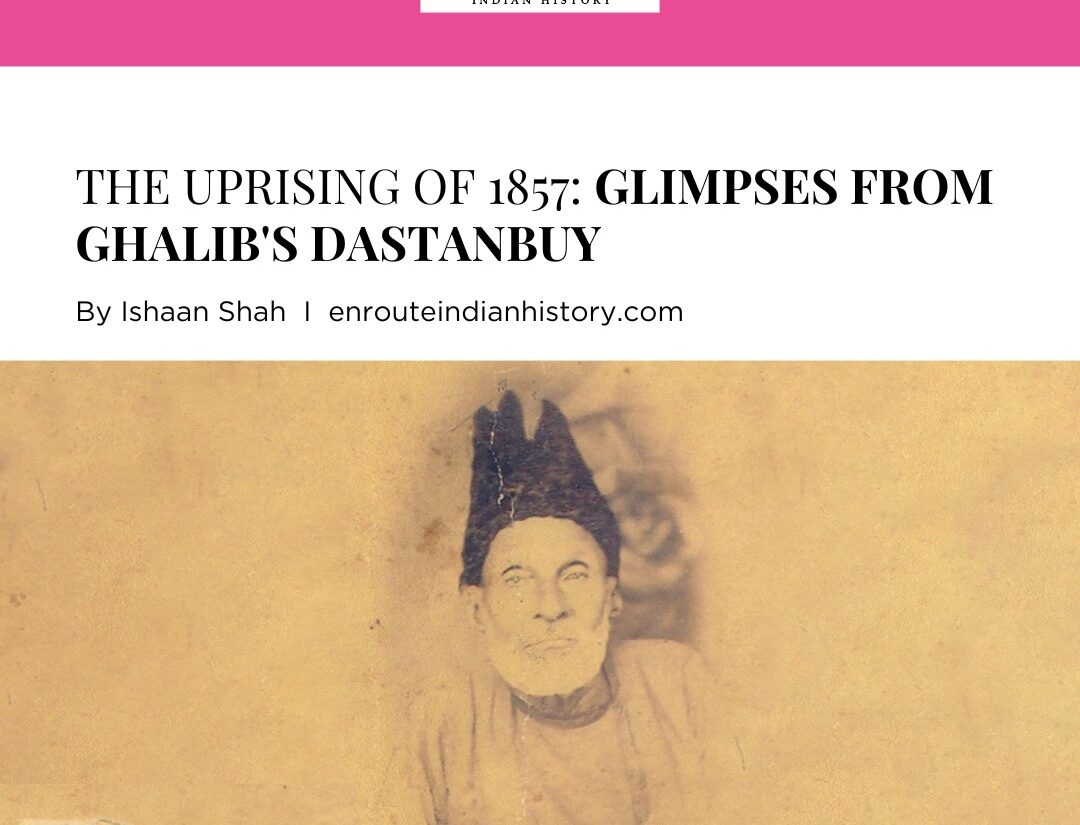
Humans have a long and established history of preserving food in the face of uncertainty and crisis. Clay pots, bamboo baskets, tin containers, kanaja, Kothi, Sanduk, and other home storage structures like these are common methods of storage in India. Granaries (Dhan Mill), which are brick dwellings placed on a platform to protect them from flood damage, are first attested in the Indus Valley culture. The Tughlaq dynasty (1320-1413) played a significant role in the development of the Sultanate’s history and culture. Ibn Battuta notes that Delhi has several anbrs, or granaries, for storing food. Due to its closeness to the river Yamuna and the resultant ease of transportation, the area of Paharganj played a significant role as a granary throughout the 18th century. Due to the consolidation of various minor communities in the 19th century after British India, Paharganj saw rapid urban expansion.
Ever since the advent of human civilization and the establishment of permanent human settlements, agriculture has emerged as a significant and integral aspect of human existence( subsistence pattern). Consequently, storing grains as a precautionary measure in anticipation of potential crises has been deeply ingrained in human behavior. Various techniques were used by human beings to preserve the excess harvest from environmental and climatic effects/changes like drought, flood, etc. Archaeologists have discovered substantial evidence of large-scale granaries throughout several excavations conducted at various sites associated with the Indus Valley civilization. In a similar vein, Delhi has observed the storage of grains via various methods, governed by distinct regulations, under both the Delhi Sultanate and the Mughal Empire. In addition to the presence of granaries inside the forts, Delhi had a multitude of conventional methods for grain storage. The region of Chattarpur, specifically referred to as Dhan Mil had formerly functioned as a granary throughout the 1970s. However, it has now transformed into a prominent location for high-end restaurants and fine dining establishments.
In India, the prevalent techniques of storage used by individuals consist of home storage structures such as clay pots which were big in size, bamboo baskets, tin containers, kanaja, Kothi, Sanduk, and similar alternatives. Traditional storage systems often consist of materials such as cow dung, bricks, wood, mud, and wheat straws. Certain buildings are built above and below ground, such as khatties or bandas, to achieve improved moisture regulation and temperature regulation. These structures also enable the creation of airtight environments, which are conducive to the storage of food grains. The Indus Valley civilization, often regarded as the most ancient civilization in the Indian subcontinent, provides the first documented evidence of the existence of granaries. The granary is a brick building constructed on an elevated platform, designed to safeguard it from any flood damage. A significant granary was discovered at the archaeological site of Mohen-Jo Daro, but at the Harappa site, six smaller granaries were unearthed. Research findings indicate that further explorations have shown the establishment of the subject in regions as far as the Yamuna River Basin, situated around 30 miles north of Delhi.
Due to its historical significance as a hub of several empires, Delhi has been the site of numerous granaries throughout its existence.
Granaries in Forts and historical cities
According to Barani’s observations during the Khilji Dynasty, it was customary to collect taxes from the Khalisa provinces in the form of kind, which were then sent to state-controlled granaries located in Delhi. During times of shortage, this hoarded product was brought out of storage and sold at a predetermined price.
Following the reign of the Khilji dynasty, the Tughlaq dynasty (1320-1413) ascended to authority in Delhi. The Tughlaq dynasty had a significant role in shaping the historical and cultural landscape of the Sultanate. The creation of karkhanas, or factories, contributed to the acceleration of economic activity, while the implementation of irrigated canals had a significant role in facilitating agricultural practices. One notable characteristic seen at Tughluqabad,(the initial capital of the Tuglaq dynasty- now located in Delhi) is the presence of silos, which are chambers used for storing grain. These silos have been discovered in massive quantities, positioned next to the walls of both the town and the fort. In his writings, Ibn Battuta refers to the presence of anbārs, or granaries, in the city of Delhi. He notes that some anbārs contained edible grains that dated back to the era of Balban.
During the 18th century, within the context of the Mughal empire, the region of Paharganj played a major part as a granary. Due to its proximity to the river Yamuna and the consequent ease of transit, this location emerged as one of the five principal markets. By the 19th century, in the wake of British India, the urban area of Paharganj saw substantial growth due to the amalgamation of several smaller localities. With the consolidation process, there was also a simultaneous merging of many groups. In the 1900s, Paharganj saw a period that saw considerable development and prosperity. However, the British colonial administration did not choose Paharganj as the capital owing to the prohibitive expenses associated with property acquisition.
Dhan Mill- from granary to buzzing business street
Post-independence Delhi became more of a consumer of grains rather than a producer. As the population concentrated in Delhi the agricultural land shrank and so did the granaries. In some cases, private granaries and production houses started facing losses, like in the case of Dhan Mill
In 1960, R.K. Jain, proprietor of a family-operated enterprise engaged in the operation of agricultural grain mills (Dhan Mill), storage facilities, and distribution services in the state of Chattisgarh, India, decided to relocate his local company to the capital city of Delhi. During the same year, he invested in a property situated in South Delhi, namely in Chattarpur, and afterward established a novel storage facility for paddy fields. The enterprise rapidly transformed into a centralized center for wholesale distribution known as the Dhan Mill Compound, with “Dhan” being the vernacular term in Hindi for grain. The city’s retail businesses were provided with stored grains. During the latter part of the 1990s, the firm entered into licensing agreements with other global corporations, granting them access to warehouse facilities to store their goods. The establishment, which experienced financial losses for a duration exceeding six years, transformed into a creative center, adopting a viable business strategy that encompasses a diverse market and serves the fashion industry while also functioning as a hub for urban design communities and luxurious eateries.
The inclusion of in-house granaries was a fundamental aspect of the architectural blueprint of the esteemed residences and havelis in Delhi during the historical period. The grain chambers, known as Kothri, are commonly situated in the corners of houses within the city of Delhi. These spaces are characterized by their limited exposure to sunlight and lack of proper ventilation. The enduring architectural feature mentioned above continues to be observed in various regions of India, including Delhi, Haryana, Punjab, and Uttar Pradesh, although referred to by different terms. In a departure from the past, the distribution of granaries in Delhi has seen a significant shift towards rural areas and villages such as Najafgarh, Mundka, Narela, and others. This marks a departure from the traditional concentration of granaries in urban areas. In the bustling city of Delhi, there are certain areas that often go unnoticed and are not as well-known as popular urban hubs like Connaught Place, Mehrauli, Chandni Chowk, Khan Market, and Lajpat Nagar. However, despite their lack of recognition, these areas play a significant role in the production, storage, and distribution of grains not only within Delhi but also in other parts of India.
References.
- Rashid, Rohma J. “Tumultuous Times: Crisis, Culture and the City of Shahjahanabad in the Eighteenth Century.” Social Scientist, vol. 45, no. 7, 2017, pp. 33-43
- Singh, Vishal, et al. “Food Grain Storage Structures: Introduction and Applications.” Engineering Interventions in Foods and Plants, 2017., Apple Academic Press, Nov. 2017, pp. 247–84. Crossref, https://doi.org/10.1201/9781315194677-8.
- Rezavi, Nadeem. “Tughluqābād: The First Planned City of Medieval Delhi”. ASHA: A Blast From The Past, Blog of Aligarh Society of History and Archeology, April 26, 2022, https://rezavisblastfromthepast.co.in/2022/04/26/tughluqabad-the-first-planned-city-of-medieval-delhi/.
- Chandra, Satish. History of Medieval India. 2007.
- A Comprehensive History of India: The Delhi Sultanate (A.D. 1206-1526), Ed. By Mohammad Habib and Khaliq Ahmad Nizami. 1970.
- Jain, Madan, “Temporality from Transience: the Urbanscape of Paharganj.” IN LIEU OF DURATION: SPATIOTEMPORAL EXCURSIONS IN LITERATURE, FILM AND ARCHITECTURE, 2021. pp. 178-199.
- Katoch, Mitaali. “From Grain to Gold: The Regeneration of New Delhi’s Dhan Mill Compound.” Design of the Unfinished, Springer International Publishing, 2021, pp. 135–45. Crossref, https://doi.org/10.1007/978-3-030-73457-2_8.
Plagiarism: 0%
Grammarly score: 85
























